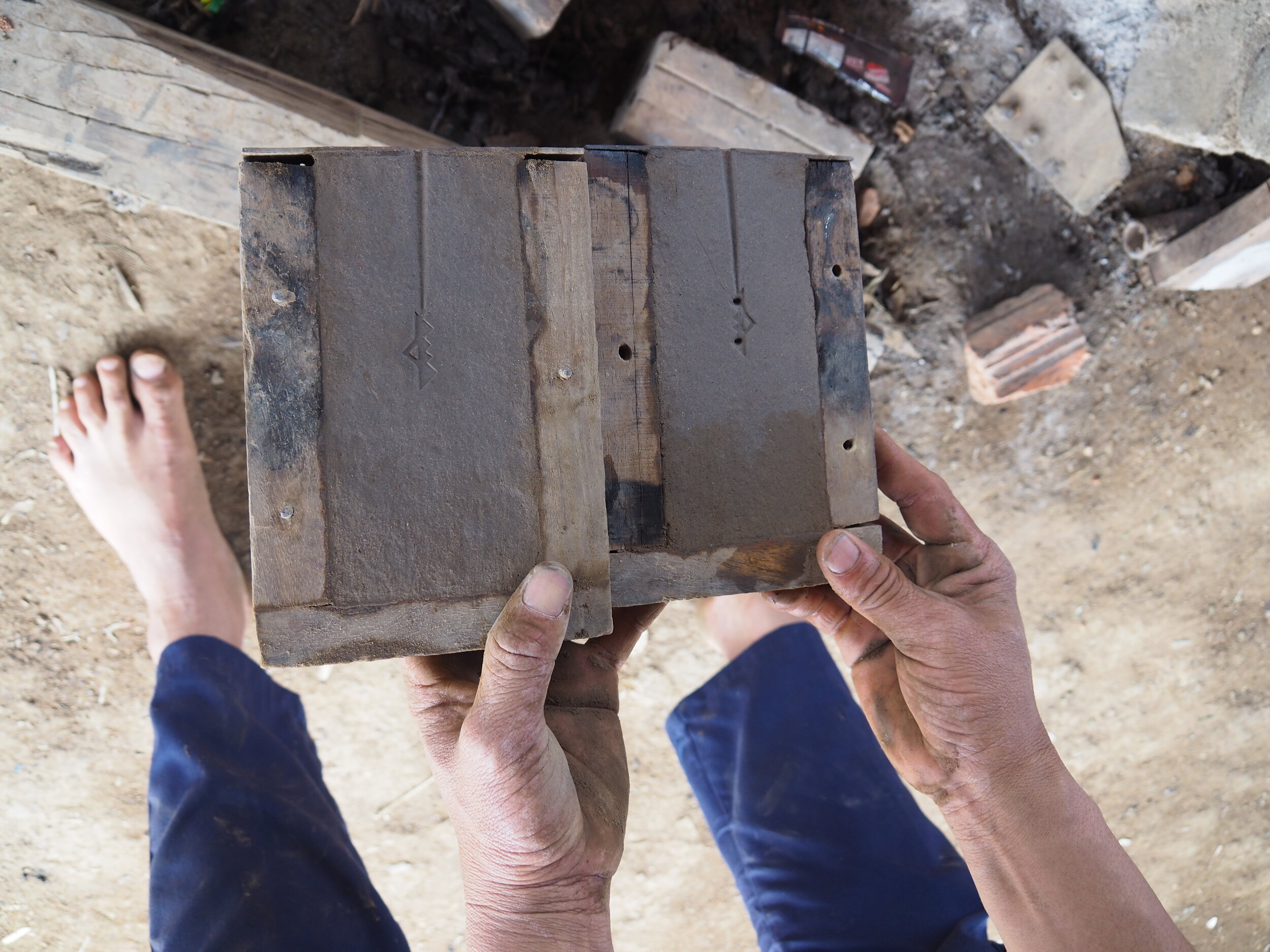THE FOUNDER’S PIECES PARTICIPATING IN THE “OM” GROUP EXHIBITION
Emilie Bitauld is the coordinator at the origin of the international group exhibition project Oiseaux Migrateurs (OM) and collaborating artist. Her contemporary art installation includes aluminum multiples that are miniaturized works of art before being jewels. Designed to be suspended as part of a spacious installation, they can also be acquired as collectibles.
CONTEXT : WHY LAOS ?
Starting from the fact that we are talking from a personal perspective and aware that the little story often speaks louder than the great story written by the victors, I chose, which is exceptional in my work, the little story based on an anecdote.
First of all, this little story is the story of Chandara, a Laotian boat people friend of my family, who nourished and opened my childhood imagination. Explaining the influence that the boat people community in Brittany may have had on the perception of the world of the welcoming communities, resulting in a chance to subtly shift from its ethnocentrism.
A PECULIAR MEDIUM :
ALUMINIUM FROM THE BOMBS
The aluminum elements result from the lost wax casting process, as practiced in the region of Ban Naphia in Laos. It is the region of Laos where there are the most bombs left to defuse, millions of bombs whose primary victims are children. The pieces are produced from the bombs, which make cultivation of the soil impossible because of a possible explosion, even many decades after the “secret war” waged by the United States in Laos. From anthropologists to the interpreters, from mine clearers to various craftsmen, fifteen main partners participate in this facet of the OM artist-run project.
Months that the village school is closed. A gigantic bomb appeared under the soil due to the movement of the wet mud. Inside the bomb, a lot of smaller ones appeared looking like ... yellow balls.
At the oven: the female director of the craftsmen team that masters both defusing bombs and melting their aluminium into new shapes.
This element that is now part of the architecture used to have different shapes, seldom resembling toys. Some bombs were painted in attractive colors. Others even looked like pineapple-shaped toys.
Here, a bomb is used as advertising, telling us that a previous farm is now making flatware.
Bombs are not only part of contemporary art projects. In Phonsavan's area, bombs are used as pillars, ovens and sauce pans, bum fire places, and more than one could imagine.
The amazing translator Linda Vue arrives on her moto at our bombastic art studio.
THE PROCESS
From the first little prototype on paper, a wax or plastic prototype is sculpted. A lot of trials are necessary to create the perfect prototype, and then, from it, a functional mold that restitutes as much as possible the original aesthetic.
Creation of a mold (wood and clay), here for the limited edition multiple KISS
The careful application of ashes, here on the mold of LIBRELIE
From the traditional clay oven to the mold, a gesture that requires experience
Tighten the two parts of the mold tightly between themselves, here with a piece of Buddhist toga turned into a rope (every man in this community has to do kind of a “spiritual service” as a monk), and shake!




THE PIECES
The “OM installation” is currently under development.
However, some of the multiples at the bottom of the page.
THE MULTIPLES
“The origin of the Migratory Birds project can be found on the day I was born. It was a gift, a gift more important than expected, as I would were them nearly all my life until now : two baby bracelets offered by a Laotian friend of the family, who had just lived the unimaginable experience of Boat-peoples. How did these artifacts arrive there ? Where were they hidden, against our friend’s bosom’s skin ? …when people themselves felt from the boats ? It's a story almost none of them can tell yet, even to the next generation. Those limited editions in art jewelry are a way to celebrate individual or collective freedom. A way to pay tribute to a community that is an exemple of how to live with our differences in harmony ; a community turned towards the future, which knows how to preserve and transmit the best of its culture.”
THE OM INSTALLATION
Part of the collective exhibition of the same name. It is composed of hanging objects. Some of them were made from the aluminium of the millions of American bombs still to be cleared in Laos. This project required years of research (notably with the support of Sciences Po Paris) and the work of fifteen people ranging from the anthropologist to the interpreter, from deminers to lost-wax casters among other artisans, and the founding historian of the Cope Museum in Vientiane.













